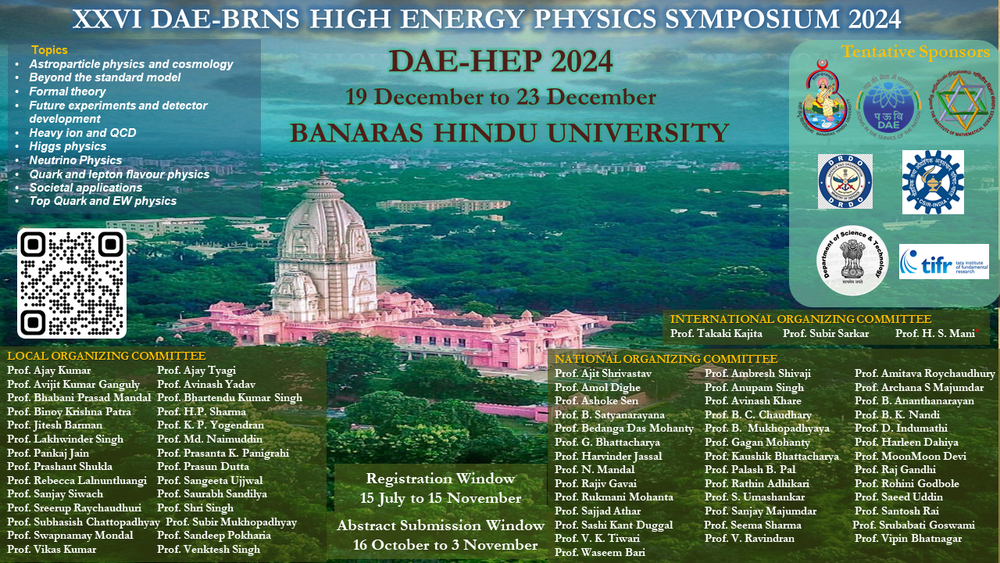Speaker
Description
Understanding the phases of quantum chromodynamics (QCD) matter has become one of the important research areas for both theoretical and experimental high-energy physics community. In the QCD phase diagram, which is characterised by temperature ($T$) and baryochemical potential ($\mu_B$), a first-order phase transition is expected at high $\mu_B$ and low T, which ends at a possible critical point. This is followed by a crossover transition from hadron to quark matter as predicted by lattice QCD calculations. In addition to the magnetic field, a huge amount of vorticity is expected to be produced in a non-central heavy ion collision. This vorticity or rotation ($\omega$) can affect the evolution of the system and, hence, the phase diagram of the QCD matter. In this work, we study the effect of rotation on the phase diagram of hadronic matter. We find that rotation plays a similar role to baryochemical potential on the thermodynamic properties of hadron gas. The rotation adds a new kind of chemical potential called rotational chemical potential. Therefore, the phase transition can occur not only in the $T-\mu_B$ plane but also in the $T-\omega$ plane. We use an interacting hadron resonance gas model with van der Waals kind of attractive and repulsive interaction among the hadrons. We observe a liquid-gas phase transition under the effect of rotation, even at zero baryochemical potential. These results allow us to reinvestigate at the QCD matter properties under the effect of rotation and study the phase diagram in the $T-\mu_B-\omega$ plane.
| Field of contribution | Phenomenology |
|---|

